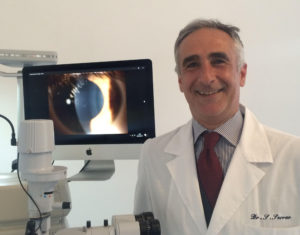When Should My Child Have Their First Eye Exam?
By Sebastiano Serrao, Ophthalmologist, MD, PhD & Kiersten Miller, Mombassador
Paediatric Ophthalmology
“When should my child have their first eye exam?” is a question we are often asked by our parents so we asked our favorite opthalmologist, Sebastiano Serrao to help us answer this question.
Preventative pediatric ophthalmology is very important and it is essential to evaluate a child’s vision before the age of three. In babies, a simple refractive defect or a squint, can cause so-called “lazy eye” or amblyopia.
So what is Amblyopia?
Amblyopia, a lazy eye, is due to the absence of sensory stimuli to the brain during the first years of life. Amblyopia is also linked to a large difference in refraction between the two eyes. For example: one eye works perfectly and the other sees blurred objects. The brain ignores the eye with blurred vision and only develops the eye with normal sight. Children from 6-7 months old to 7-8 years old have a plasticity of the sight system so if caught early enough, this process can be corrected with antiamblyopic therapy. Antiamblyopic therapy is performed by occlusion, this is when a bandage is placed over the eye with the better vision in order to stimulate the amblyopic eye to increase its visual acuity. The younger the child is, the more effective the treatment is, after 9-10 year of age it is no longer an effective cure.
And Refractive Defects?
Refractive defects occur because the images from the outside world captured by the baby’s eye are not in focus. Astigmatism is a result of the irregular surface of the cornea which reflects the light erratically. Refractive defects are most often treated with a pair of eyeglasses, in rare cases contact lenses may be prescribed for children.
And lastly, Squinting
Esotropia is when the eye turns inwards and Exotropia when the eye turns outwards.
The angle of the squint can vary and can be present for both long and short sighted vision. Moreover it can be constant, intermittent, monolateral or alternating. Almost all squints arise at a young age and their premature recognition is fundamental for successful treatment. Squinting can be treated with eyeglasses, ortoptic excercises but sometimes surgery is needed.
While planning your child’s pediatric visits it is a good idea to plan an ophthalmologist visit as well since the sooner your child visits an eye doctor, the better chances they have to correct developing vision issues.
Sebastiano Serrao, MD, PhD is a bilingual Ophalmologist and Refractive Surgeon who has travelled the world speaking and innovating in his field while being a father to his three daughters.

